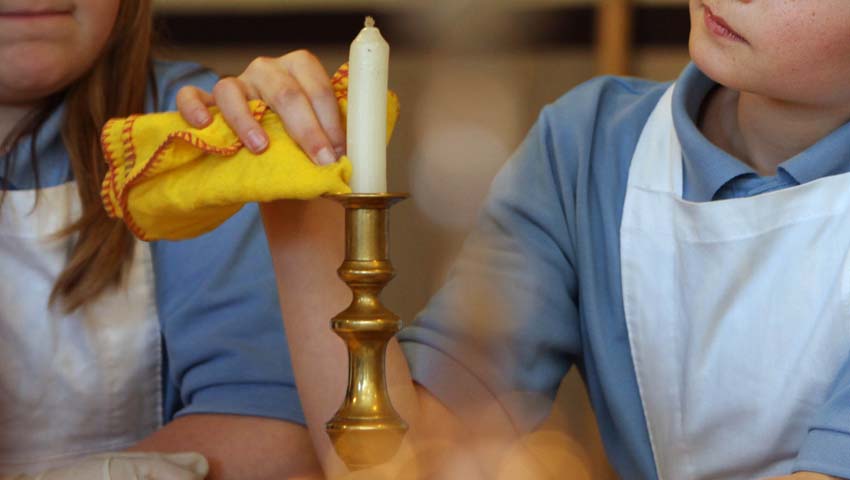DESCRIPTION
These sessions will be adapted to the age and needs of the children in the class.
In general, a session will include:
- An introduction to the Castle in the Victorian period including the Bute family who owned the Castle, the clothing worn by the family and their servants and the development of Cardiff Castle, which is illustrated using the model of the Castle in the Housekeeper’s Room.
- Dressing up activity followed by role play. Pupils can dress up as Victorian servants and learn how they should greet a member of the Bute family
- Object handling session involving a wide range of original artefacts along with a few replicas. Group activity with mystery objects incorporating problem solving, thinking skills, reasoning, team work, creativity and drama.
The session is taken by the Education Officer who is DBS-checked or one of the Castle guides
DURATION
The session will last for 60 minutes though shorter sessions are sometimes chosen by groups with limited time or younger children. The guided tour of the Castle will last approximately 50 minutes. Teachers with younger children may choose a shorter tour (30 minutes) which omits the spiral staircase to the top of one of the towers.
By the end of the session, your pupils will have:
- Learnt about the Bute family – owners of Cardiff Castle during the Victorian period – and the development of the Castle.
- Learnt about the clothing worn by rich children and servants at the time and dressed up as servants.
- Learnt how act as servants during a role play activity.
- Learnt how to safely handle original artefacts with care and respect.
- Learnt how to employ thinking skills and problem solving to work out how objects would have been used.
- Learnt to work as a team and take it in turns to contribute to a group presentation.
- Presented ideas using clear speech, creativity and acting skills.
Humanities (PS2-3 – Wales)
- Enquiry, exploration, and investigation inspire curiosity about the world, it’s past, present, and future.
- Events and human experiences are complex and are perceived, interpreted, and represented in different ways.
History – KS2 (England)
- A study of an aspect or theme in British history that extends pupils’ chronological knowledge beyond 1066.
What Else is Included in Your Visit
- Guided Tour of Castle – A guided tour of the House is included in the price of the visit. The tour will take children to some of the highly decorated rooms that date from the Victorian period. The designs reflect the architect’s vision of how the interior of a medieval Castle would have been.
- Use of the Audio Guide that has been written especially for children, downloadable in advance.
- Access to areas of the Grounds including the Keep, the Battlements and Wartime Shelters.
- A Visit to Firing Line – Museum of the Welsh Soldier (Military Museum in the Interpretation Centre). Please note: Firing Line is independently managed, and any activities offered are not a part of Cardiff Castle’s Education Service. Visits may not be possible on certain days, or may incur an additional charge.
Telephone
029 2087 8110
education@cardiff.gov.uk
Enquiry: An Audience with Queen Victoria
Please let our Education Office know if you have any questions about the An Audience with Queen Victoria workshop.


